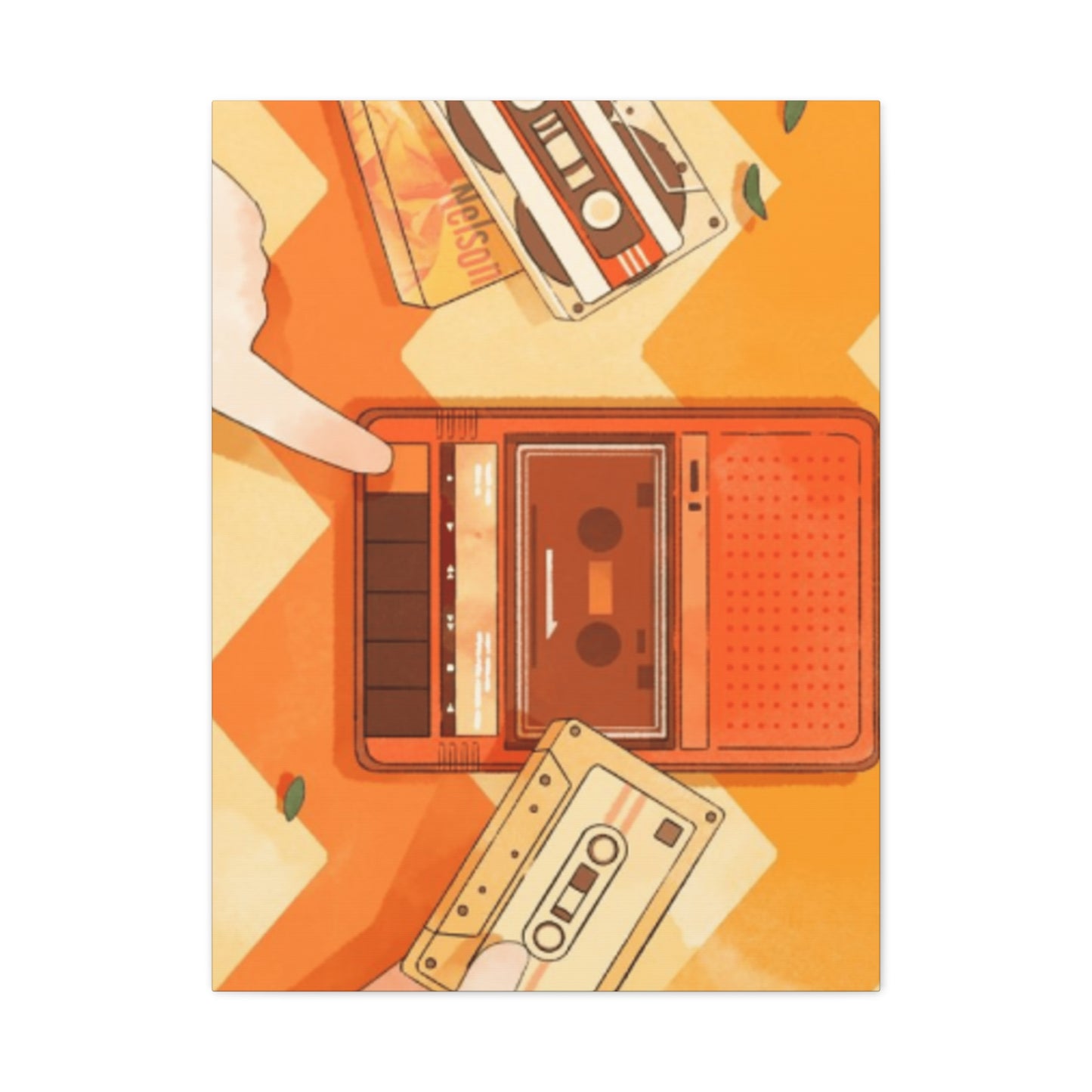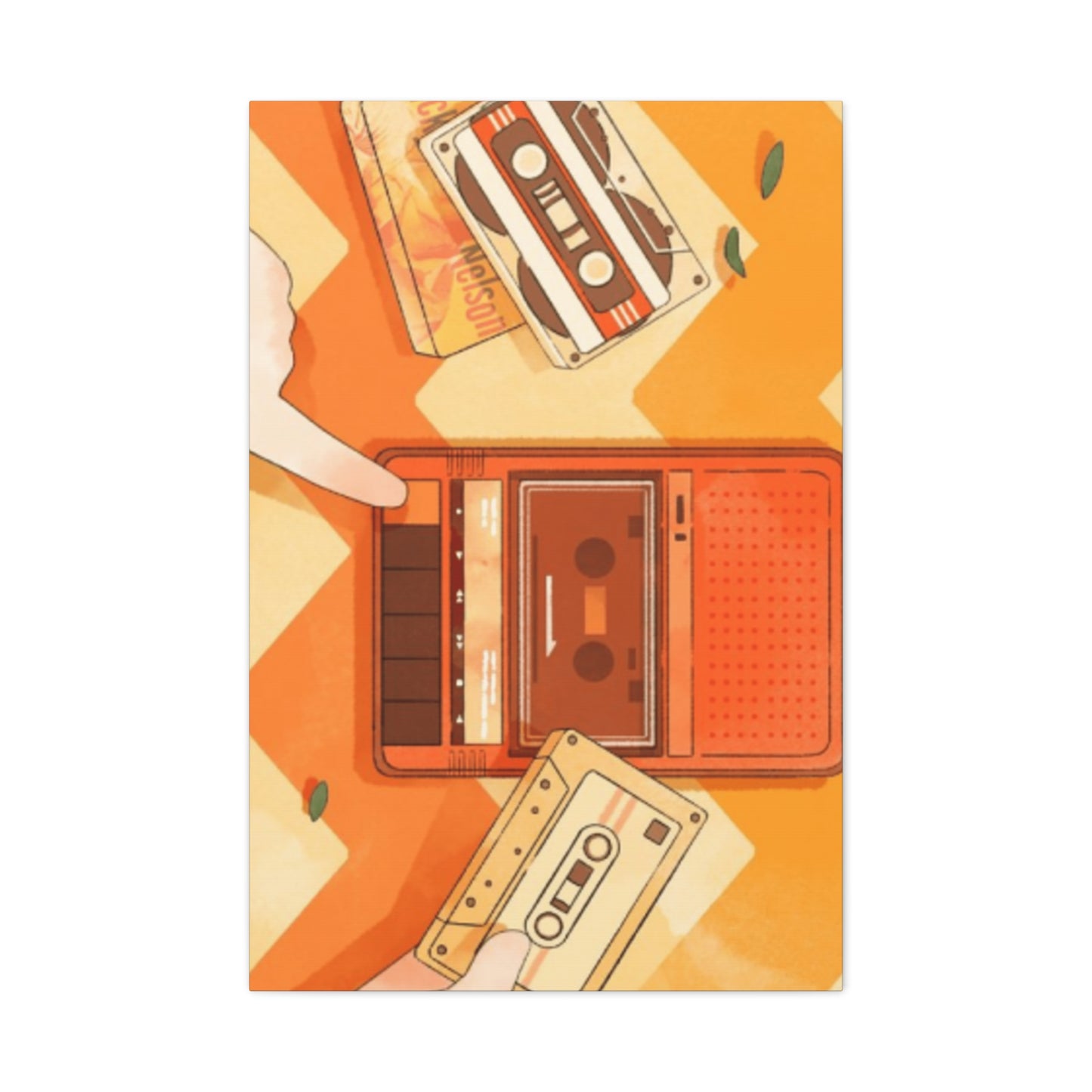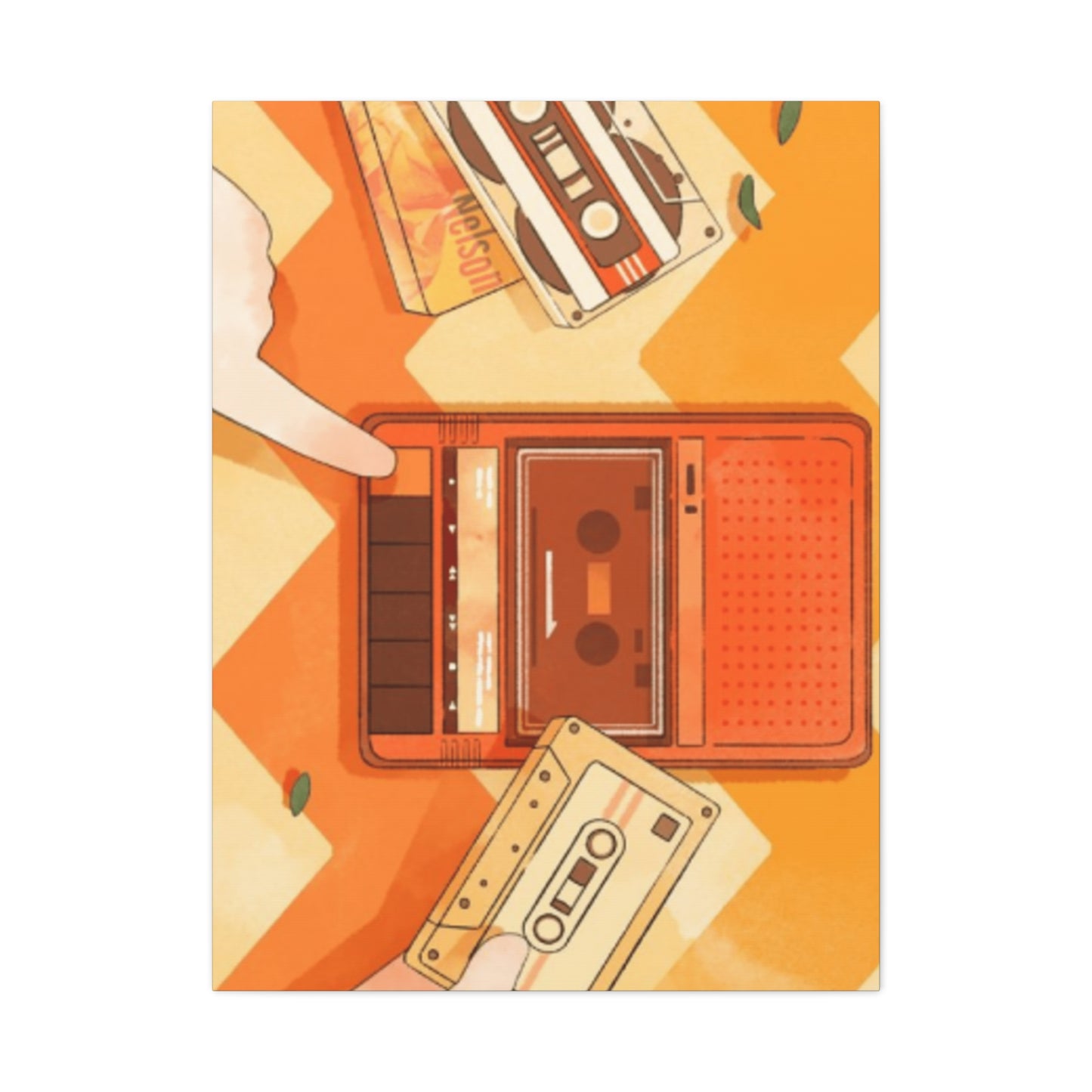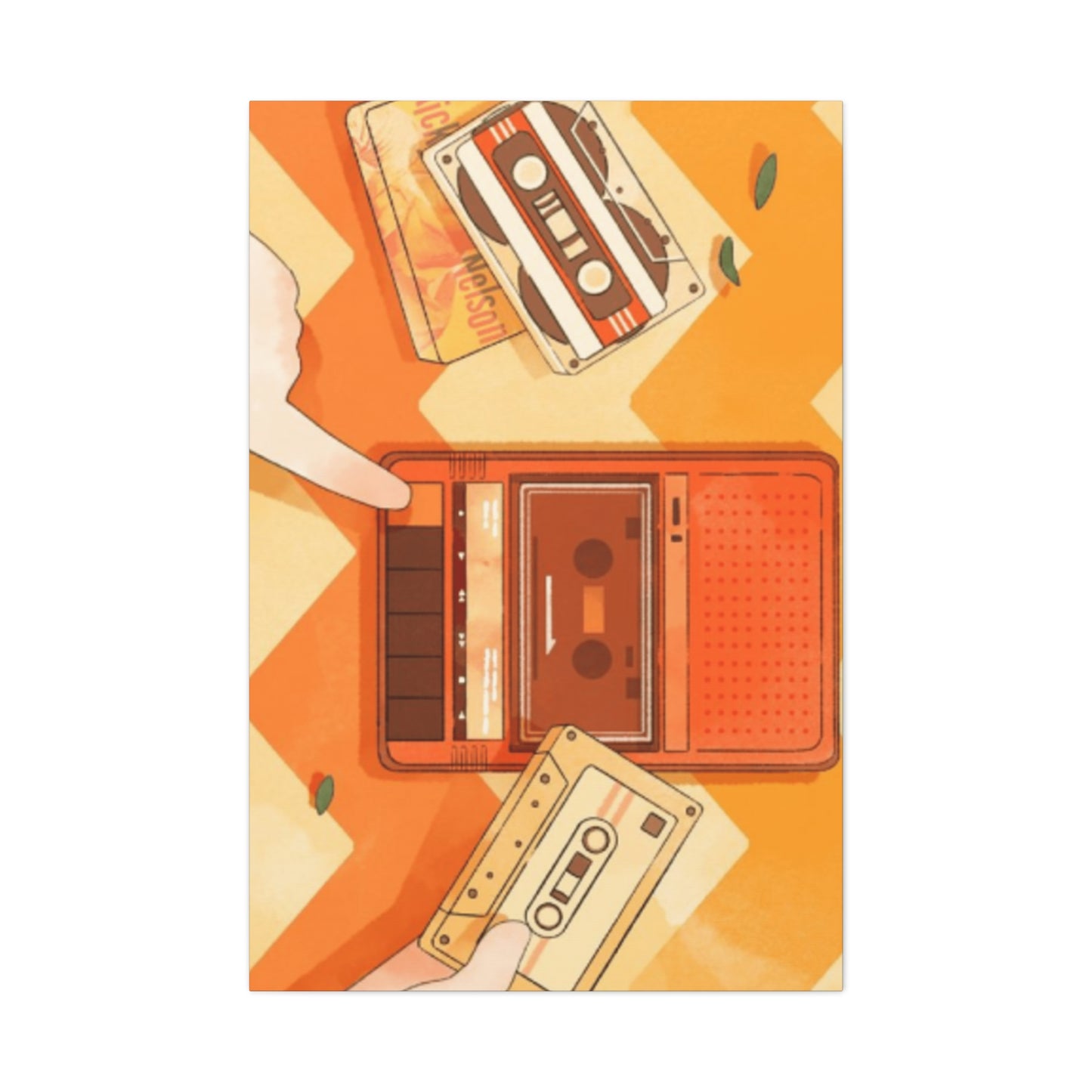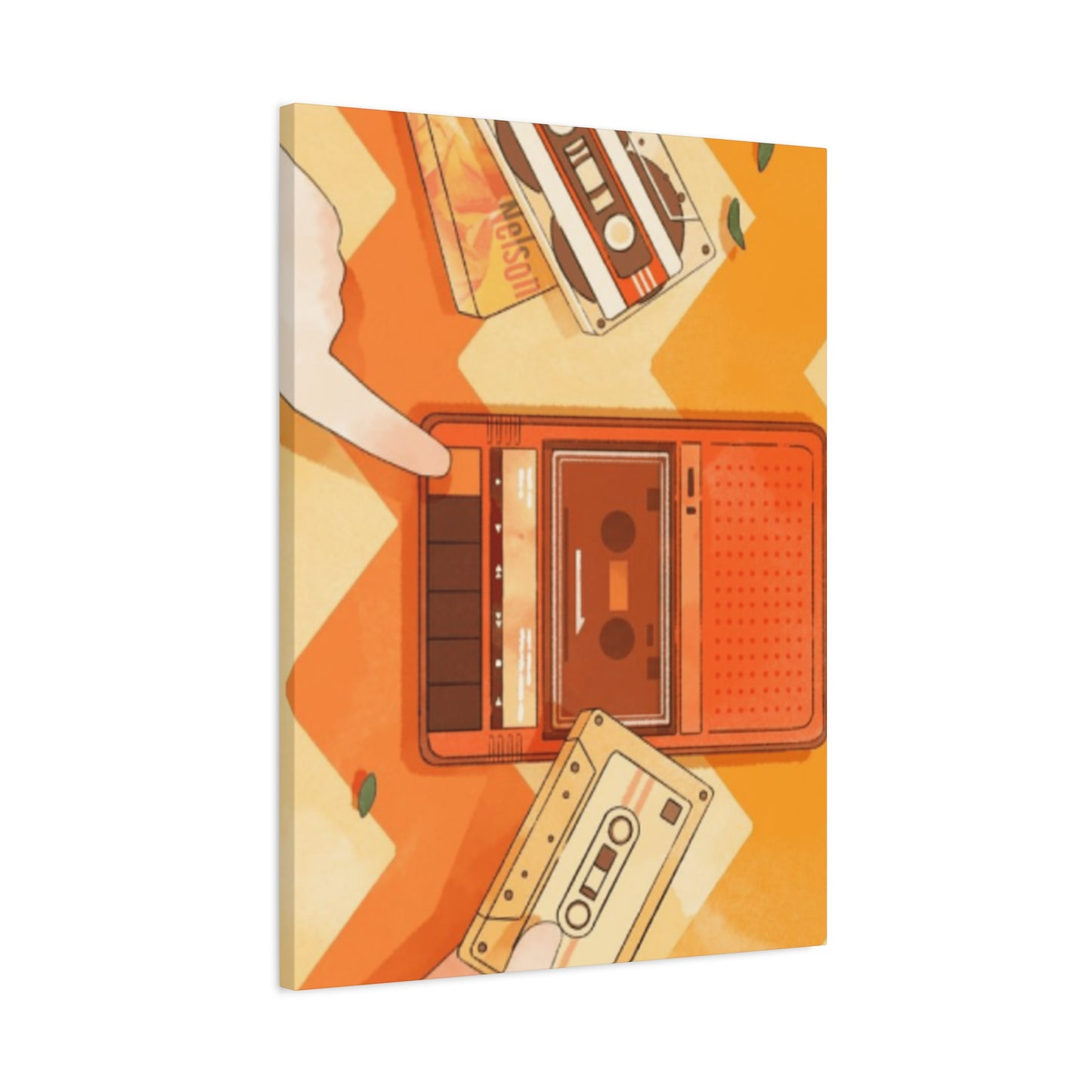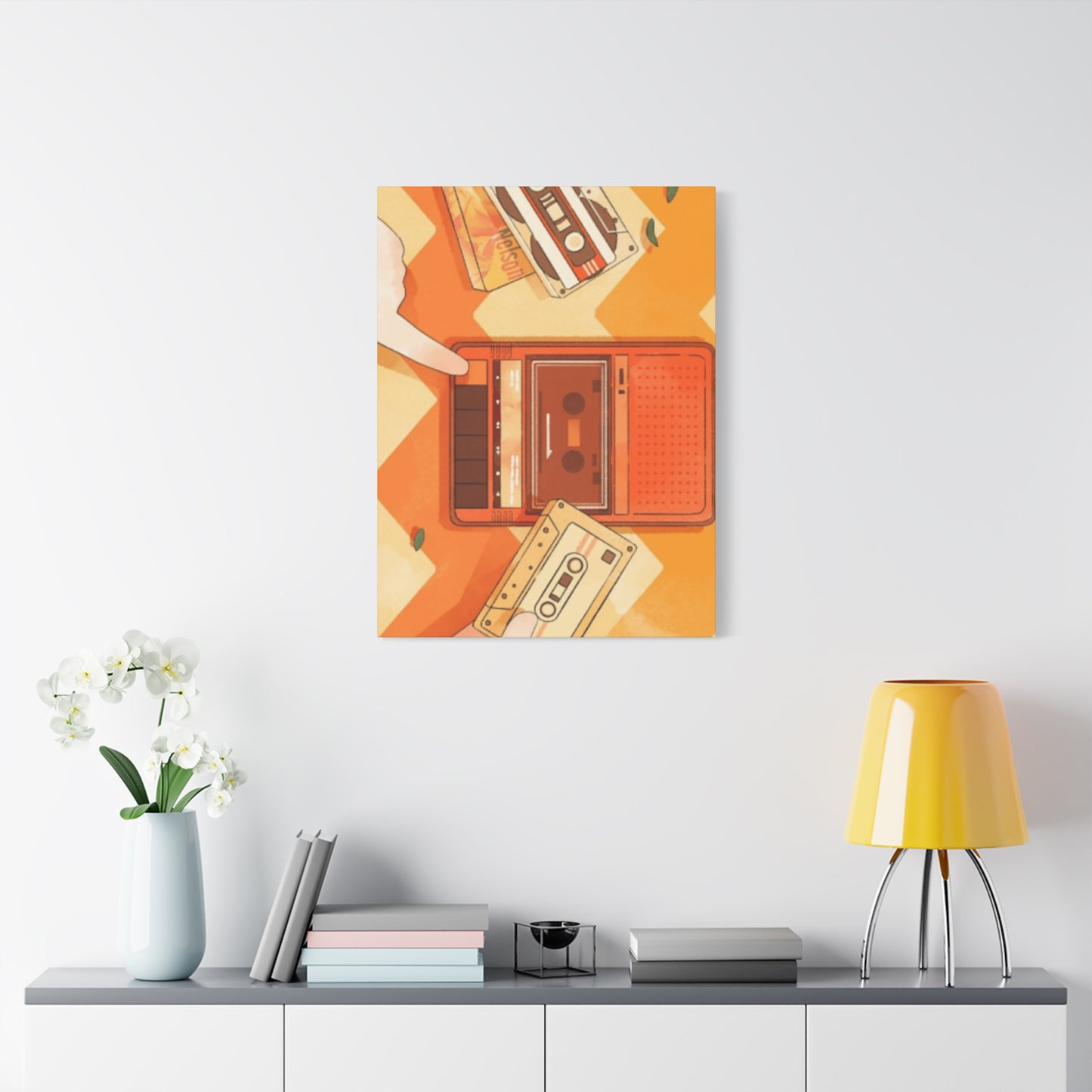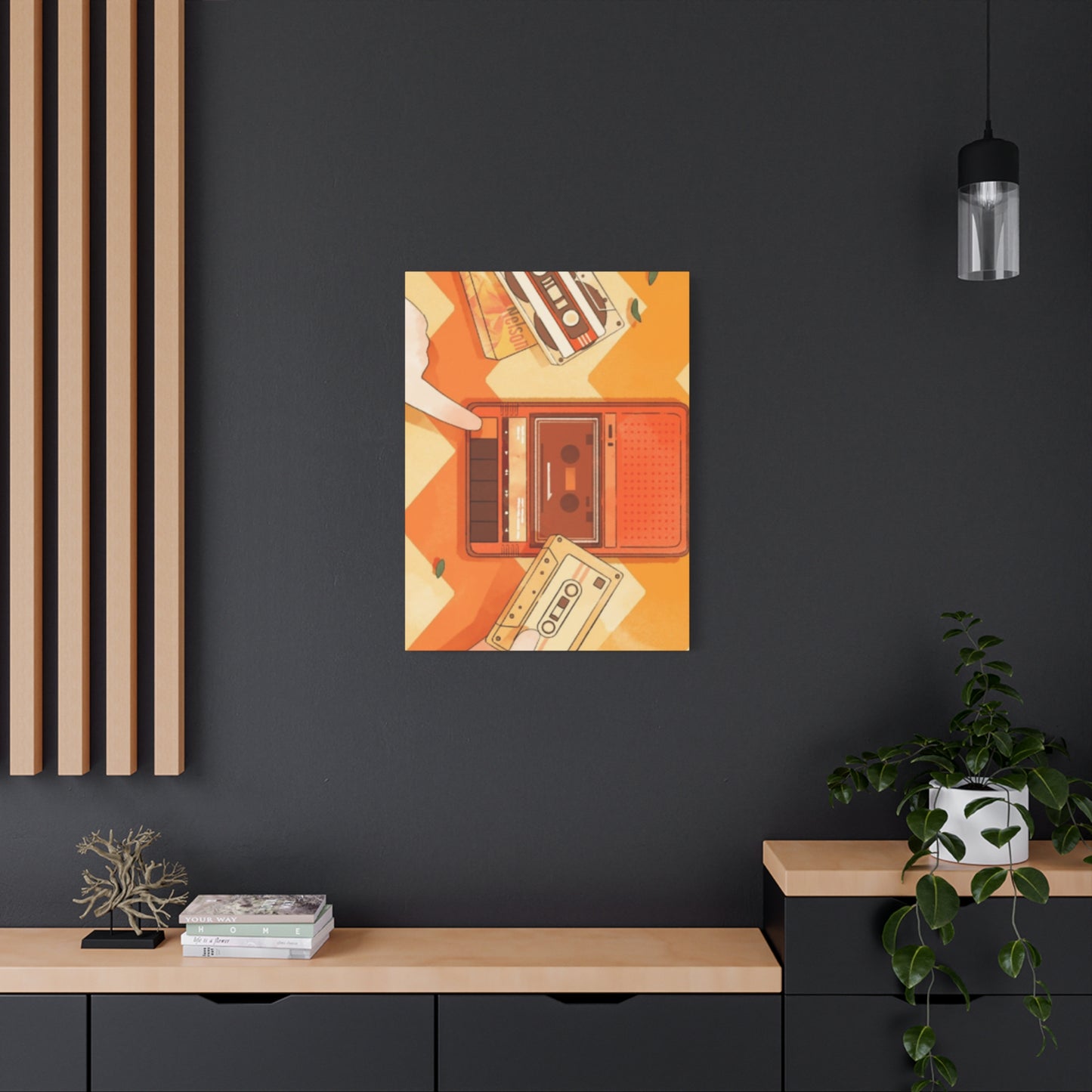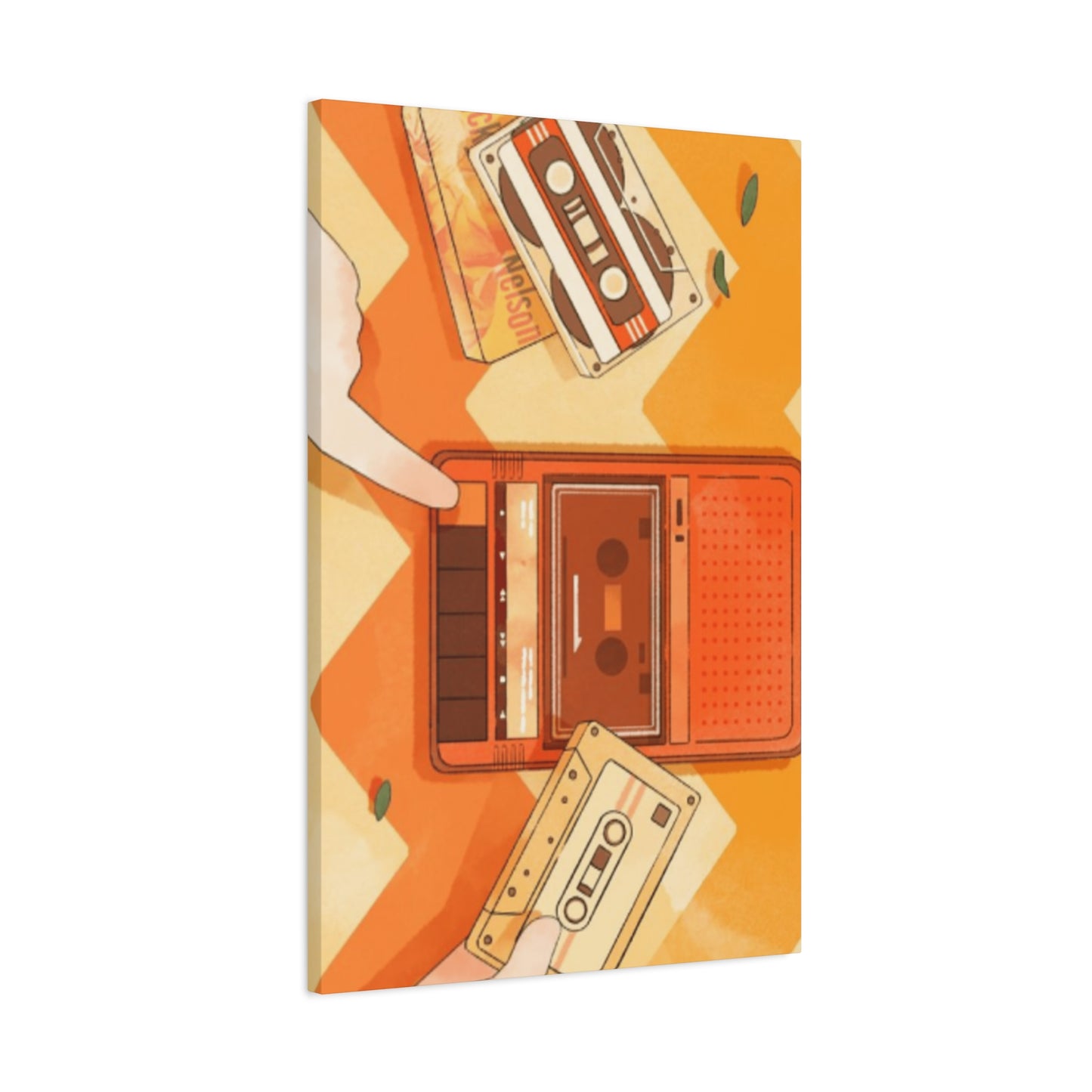Orange Record Player Wall Art: Energize Your Space with Vintage Music Decor
The resurgence of vinyl culture has brought with it a renewed appreciation for the aesthetic beauty of turntables and music equipment. Among the various color schemes and design approaches available, orange record player wall art stands out as a vibrant choice that combines nostalgia with contemporary energy. This comprehensive exploration delves into the world of orange-themed turntable artwork, examining how these pieces can transform living spaces, enhance musical environments, and serve as focal points in various room settings.
The warm, energetic hue of orange brings an immediate sense of vitality to any wall it adorns. When paired with the classic silhouette of a record player, this color creates a unique fusion of retro charm and modern boldness. Whether you are a dedicated vinyl collector, a music enthusiast, or simply someone who appreciates eye-catching interior design, orange turntable artwork offers a distinctive way to express your passion for sound and style.
Nostalgic Appeal: Orange Turntable Artwork with Classic Charm
The golden age of vinyl records brought with it an array of colorful equipment that defined an era. Orange turntable artwork taps into this rich history, evoking memories of basement listening sessions, record store discoveries, and the tactile pleasure of dropping a needle onto vinyl. The choice of orange as a primary color is particularly significant, as it recalls the warm, analog tones of vintage audio equipment and the sunset-orange glow of classic amplifier lights.
These artistic representations often feature detailed renderings of classic turntable models, complete with tonearms, platters, and control knobs. The orange coloration can range from soft peachy tones to bold, saturated tangerine hues, each offering a different emotional resonance. Softer shades create a gentle, contemplative atmosphere that invites viewers to pause and reflect on musical memories, while brighter oranges inject energy and excitement into a space.
Many artists who create orange turntable artwork draw inspiration from specific decades, particularly the 1960s and 1970s, when both vinyl culture and bold color choices dominated interior design. These pieces often incorporate period-appropriate design elements such as geometric patterns, sunburst motifs, and typography reminiscent of album covers from that era. The result is artwork that functions as both a celebration of music history and a stylish decorative element.
The nostalgic quality of these pieces extends beyond mere visual appeal. For many viewers, orange record player art serves as a gateway to personal memories associated with music. It might remind someone of their first record player, a parent's music collection, or the discovery of a favorite band. This emotional connection transforms the artwork from simple decoration into a meaningful personal statement that reflects individual identity and values.
Collectors of vintage audio equipment particularly appreciate orange turntable artwork as a complement to their physical collections. These pieces can depict specific models they own or aspire to acquire, creating a visual catalog of turntable history. The artwork serves as a bridge between the functional and the aesthetic, honoring the engineering beauty of these devices while presenting them as objects worthy of artistic interpretation.
Energizing Musical Spaces: Adding Orange Accents to Your Listening Room
A dedicated music room or listening area deserves decor that reflects its purpose while enhancing the overall experience. Orange record player wall art serves as an ideal accent piece for these spaces, adding visual interest without overwhelming the primary function of the room. The color orange is psychologically associated with creativity, enthusiasm, and social interaction, making it particularly well-suited for environments where music takes center stage.
When incorporating orange turntable artwork into a music room, consider the existing color palette and lighting conditions. Orange works beautifully with neutral backgrounds such as white, gray, or beige, where it can truly pop and command attention. It also pairs surprisingly well with deep blues and teals, creating a complementary color scheme that adds depth and sophistication to the space. For rooms with abundant natural light, brighter orange tones will maintain their vibrancy throughout the day, while spaces with limited natural illumination might benefit from lighter, more luminous orange shades.
The placement of orange record player art within a music room should be strategic. Consider positioning the artwork above or adjacent to your actual turntable setup, creating a visual echo that reinforces the room's purpose. Alternatively, place the art on a wall opposite your listening position, providing a focal point to contemplate while immersed in music. The artwork can also be used to define specific zones within a larger space, marking the music area as distinct from other functions.
Size considerations are important when selecting orange turntable art for a music room. Larger pieces create dramatic statements and can anchor an entire wall, while smaller works allow for gallery-style arrangements that tell a more complex visual story. Multiple pieces in varying sizes can be arranged to create rhythm and movement, much like musical phrases within a composition. This approach allows you to build a collection over time, adding new pieces as your musical tastes and interests evolve.
Classic Turntable Designs Reimagined with Contemporary Orange Aesthetics
The intersection of vintage design and contemporary color application creates fascinating artistic possibilities. Orange record player art often takes classic turntable silhouettes and reimagines them through modern artistic lenses, resulting in pieces that honor history while speaking to current aesthetic sensibilities. This approach appeals to those who appreciate the craftsmanship of vintage audio equipment but want artwork that feels fresh and relevant to today's design landscape.
Artists working in this style often begin with accurate technical drawings or photographs of iconic turntable models. They then apply contemporary artistic techniques such as digital manipulation, screen printing effects, or abstract color overlays that transform the original reference material into something new. The orange color palette might be applied uniformly across the entire composition, or it might be used selectively to highlight specific components such as the platter, tonearm, or base.
One popular approach involves creating silhouette-style artwork where the turntable is rendered as a solid orange shape against a contrasting background. This minimalist treatment emphasizes the iconic form of the record player while stripping away extraneous detail. The resulting images are instantly recognizable yet abstract enough to function as pure design elements. These pieces work particularly well in modern and contemporary interiors where clean lines and bold color statements are valued.
Another artistic direction incorporates texture and layering to create depth and visual interest. Artists might combine orange turntable imagery with vintage paper textures, sheet music fragments, or typography from old record labels. These elements are layered and blended to create compositions that feel rich with history and meaning. The orange serves as a unifying color that ties disparate elements together while ensuring the artwork maintains visual coherence.
Digital artists have embraced orange record player themes, creating works that exist at the intersection of photography, graphic design, and illustration. These pieces often feature surreal or unexpected treatments of turntable imagery, such as floating components, impossible perspectives, or integration with abstract patterns. The orange color palette grounds these experimental compositions, providing a warm, approachable entry point even when the overall treatment is avant-garde.
The reimagining of classic turntables through orange-tinted artwork also extends to stylized and cartoon-like interpretations. These playful approaches reduce the record player to its essential forms, creating friendly, accessible images that appeal to viewers of all ages. Such pieces work well in casual spaces, game rooms, or anywhere a lighthearted approach to music decor is desired. The orange coloring in these contexts often feels particularly joyful and inviting, stripping away any pretense of seriousness while still celebrating the subject matter.
Making Bold Interior Statements with Orange Turntable Prints
In the realm of interior design, making a statement often requires courage and conviction. Orange record player art provides an opportunity to introduce bold visual elements that immediately capture attention and establish room character. Unlike subtle, neutral decor that fades into the background, orange turntable prints demand to be noticed, creating instant focal points that can anchor entire design schemes.
The boldness of these pieces stems from both subject matter and color choice. Record players represent a specific cultural moment and aesthetic philosophy, appealing to those who value authenticity, craftsmanship, and the tangible nature of physical media. The orange color amplifies this statement, adding layers of energy, creativity, and individualism. Together, these elements create artwork that speaks volumes about the tastes and values of those who display it.
When used in bold interior statements, orange turntable art works best when given adequate visual space. This means avoiding cluttered walls where the artwork must compete for attention with numerous other elements. Instead, consider dedicating a prominent wall to a single large piece or a carefully curated small collection. This approach allows the artwork to breathe and establishes it as an intentional design choice rather than an afterthought.
The psychological impact of orange in interior spaces should not be underestimated. This warm, vibrant color stimulates mental activity, encourages conversation, and creates a sense of warmth and welcome. In social spaces such as living rooms, dining areas, or entertainment zones, orange turntable art can set a tone of casual sophistication and creative energy. Guests will naturally be drawn to these pieces, providing natural conversation starters and expressions of personal style.
Bold statements in interior design work best when they feel authentic to the inhabitants of the space. Orange record player art should be chosen because it genuinely resonates with your interests and aesthetic preferences, not simply because it is trendy or attention-grabbing. When artwork reflects true passion, it radiates authenticity that visitors can sense and appreciate. This genuine connection transforms decorative choices into meaningful expressions of identity.
Consider the architectural features of your space when planning bold art installations. Orange turntable prints can emphasize or complement existing elements such as exposed brick, wood beams, or architectural moldings. They can also serve as counterpoints to very modern, minimalist architecture, introducing organic curves and warm color into spaces that might otherwise feel stark or cold. The key is finding the right balance between the artwork and its environment.
Bordered Elegance: Showcasing Orange Turntables in Decorative Frames
The presentation of artwork significantly influences its perceived value and impact. While canvas wraps and frameless mounting have their place, there is something particularly elegant about orange record player art displayed in quality decorative frames. The right frame elevates the artwork from a simple print to a curated piece that commands respect and attention.
Frame selection for orange turntable art involves balancing several considerations. The frame should complement rather than compete with the artwork, providing structure and definition without overwhelming the central image. For orange prints, frames in neutral tones such as black, white, or natural wood often work best, creating clean boundaries that allow the vibrant color to shine. Black frames in particular create strong contrast that makes orange tones appear even more saturated and energetic.
Wood frames offer warmth and texture that can enhance the vintage quality of record player imagery. Medium to dark wood tones create sophisticated presentations that work well in traditional or transitional interiors, while lighter woods such as maple or ash bring a Scandinavian-inspired simplicity that suits contemporary spaces. The grain and finish of the wood should be considered as part of the overall aesthetic, with options ranging from glossy, polished surfaces to matte, natural finishes.
Metal frames provide a modern, industrial edge that can be particularly effective with orange turntable art. Thin metal frames in black, gold, or brushed aluminum create sleek, gallery-quality presentations that work beautifully in loft spaces, modern apartments, or any environment with an urban aesthetic. The precision and clean lines of metal framing complement the mechanical nature of turntable imagery while the orange color provides necessary warmth and visual interest.
Illuminating Studios and Creative Workspaces with Vibrant Orange Music Artwork
Creative workspaces thrive on inspiration, and the environment in which we work significantly impacts our creative output. Orange record player wall art serves as an excellent choice for studios, home offices, and creative spaces, providing both visual stimulation and a connection to the creative legacy of music culture. The color orange is known to stimulate creativity, enthusiasm, and mental energy, making it particularly appropriate for work environments.
In a home recording studio or music production space, orange turntable art creates immediate thematic coherence. It signals the room's purpose while honoring the history of recorded sound. For musicians, producers, and audio engineers, these pieces serve as daily reminders of the craft's rich heritage and the importance of both technical skill and artistic vision. The artwork can inspire creative sessions, serving as a visual anchor during long hours of work.
Visual artists, designers, and other creative professionals also benefit from orange music-themed artwork in their studios. The energetic color palette helps combat the fatigue that can accompany long creative sessions, while the subject matter provides a welcome reminder of the connections between different artistic disciplines. Music and visual art have always influenced each other, and artwork that celebrates this relationship can spark unexpected creative connections.
The placement of orange turntable art in creative workspaces should consider sight lines and work patterns. Position artwork where it can be easily viewed during breaks or moments of reflection, providing a mental reset point during intensive work periods. Avoid placing artwork directly in the primary line of sight when seated at a desk or workstation, as this can become distracting during focused tasks. Instead, position pieces on adjacent walls or in areas visible when leaning back or standing up.
For those who conduct video calls or create content from their workspace, orange turntable art can function as an appealing and distinctive background element. The vibrant color and interesting subject matter create visual interest without being overly busy or distracting. This is particularly valuable for musicians, producers, or music industry professionals whose background should reflect their expertise and passion.
Lighting in creative workspaces requires careful consideration, as it must serve both functional and aesthetic purposes. Orange turntable artwork benefits from good illumination that showcases its colors accurately without creating screen glare or interfering with work lighting. Consider using adjustable task lighting that can be redirected as needed, combined with ambient lighting that keeps the entire space, including artwork, well-lit and inviting.
The psychological benefits of orange in work environments extend beyond mere aesthetic pleasure. Studies have shown that warm colors can increase feelings of comfort and reduce stress, important factors in maintaining creative productivity over extended periods. By incorporating orange turntable art into your workspace, you create an environment that supports both the practical requirements of work and the emotional needs of the creative individual.
Eccentric Wall Decor: Unconventional Orange Turntable Artistic Expressions
While many orange record player artworks take relatively straightforward approaches to their subject matter, there exists a fascinating category of unconventional and eccentric pieces that push creative boundaries. These works appeal to those who appreciate the unexpected, value uniqueness, and want their wall decor to spark conversation and challenge expectations.
Eccentric orange turntable art might incorporate surreal elements that transform the familiar object into something dreamlike or fantastical. Imagine a turntable where the vinyl record is replaced by a blooming flower, a celestial body, or an abstract splash of color. These unexpected substitutions maintain the recognizable form of the record player while introducing elements of surprise and interpretation. The orange color palette grounds these flights of fancy, providing visual coherence even as the content becomes increasingly abstract.
Mixed media approaches create particularly interesting eccentric pieces. Artists might combine photographic elements of actual turntables with painted, collaged, or digitally manipulated additions. Three-dimensional elements such as attached vinyl fragments, metal components, or textile elements can transform a flat artwork into a sculptural wall piece. These mixed media works blur the lines between traditional wall art and assemblage, creating unique objects that defy easy categorization.
Pop art influences appear frequently in eccentric orange turntable artwork. Artists working in this tradition might multiply and repeat turntable images in grid patterns reminiscent of Warhol, each variation rendered in slightly different orange tones. They might apply bold, simplified color blocking that reduces the turntable to its most essential shapes while amplifying visual impact. Pop art approaches celebrate the record player as a cultural icon while embracing the bold, graphic sensibilities of the movement.
Abstract interpretations of turntables offer another avenue for eccentricity. Rather than depicting a recognizable record player, these pieces might deconstruct the form into geometric components, color fields, or gestural marks that suggest rather than represent their subject. The orange color palette becomes the primary link to the theme, while the composition itself ventures into pure abstraction. These pieces work particularly well in modern and contemporary interiors where purely representational art might feel too literal.
Modernist Aesthetics: Mid-Century Design Philosophy Meets Musical Iconography
The mid-century modern design movement, which flourished from the 1940s through the 1960s, emphasized clean lines, organic forms, and the integration of form and function. This aesthetic philosophy aligns perfectly with the design principles embodied in classic turntables, making orange record player art particularly suited to mid-century modern interiors. The marriage of these elements creates artwork that feels both historically grounded and timelessly stylish.
Mid-century modern orange turntable art typically features simplified forms and reduced color palettes. The record player might be rendered in profile or from above, emphasizing its circular platter and geometric components. Orange tones in these pieces often lean toward the more muted, earthy shades popular in mid-century design, such as burnt orange, rust, or terracotta, rather than bright, fluorescent hues. These sophisticated color choices ensure the artwork integrates smoothly with authentic mid-century furnishings and color schemes.
Typography plays an important role in mid-century modern turntable art. Period-appropriate fonts reminiscent of 1950s and 1960s album covers, advertisements, and product packaging might be incorporated to add context or create compositional interest. These typographic elements are typically rendered in complementary colors such as cream, olive green, or teal, creating balanced compositions that honor the design sensibilities of the era.
The concept of atomic age design frequently appears in mid-century modern turntable artwork. Starburst patterns, atomic orbital motifs, and geometric shapes inspired by scientific imagery of the period add dynamic energy to compositions while maintaining the clean, organized aesthetic that defines the style. These elements can be integrated as background patterns, incorporated into the turntable design itself, or used as framing devices around the central imagery.
Texture and material suggestion also matter in mid-century modern orange turntable art. Artists might suggest the warm glow of wood veneer that characterized period furniture and audio equipment, the smooth plastic surfaces of modernist industrial design, or the textured upholstery fabrics popular in mid-century interiors. These textural suggestions add depth and tactile interest to the artwork while reinforcing its connection to mid-century material culture.
The composition of mid-century modern turntable art often emphasizes negative space and balanced asymmetry. Rather than centering the turntable image or filling the entire composition with detail, artists working in this style understand the power of empty space to create visual breathing room and direct the viewer's eye. The orange turntable might occupy only a portion of the canvas, with the remaining space rendered in complementary neutral tones that enhance rather than compete with the central subject.
Color relationships in mid-century modern turntable art follow principles established by designers of the period. Orange is typically paired with colors that appeared frequently in mid-century interiors: various shades of green from olive to turquoise, warm browns and tans, creamy whites, and occasionally bold accents of yellow or red. These color combinations create harmonious compositions that feel authentically rooted in their period while remaining accessible to contemporary viewers.
Vinyl Atmosphere: Creating Orange-Themed Ambiance in Living Areas
The living room serves as the heart of the home, a space for relaxation, entertainment, and social gathering. Orange record player wall art contributes significantly to creating ambiance in these areas, particularly for those who want to establish a music-focused or vintage-inspired atmosphere. The warm, inviting nature of orange makes it particularly well-suited to spaces designed for comfort and conviviality.
When creating an orange vinyl-themed living room, consider the artwork as one element within a larger design narrative. The orange turntable prints set a color direction that can be echoed in throw pillows, blankets, accent furniture, or decorative objects. This repetition of color creates visual unity and makes the space feel intentionally designed rather than randomly assembled. However, avoid oversaturating the space with orange; the color works best as an accent that punctuates a more neutral base palette.
The scale of orange turntable artwork in living rooms should be proportional to the size of the space and the wall on which it will hang. Large, open walls above sofas or mantels can accommodate substantial pieces or gallery wall arrangements that make bold statements. Smaller walls or areas with more architectural detail might be better suited to modest pieces that complement rather than dominate. Always measure carefully and consider using paper templates to visualize scale before making final placement decisions.
Layering textures adds depth to orange vinyl-themed living rooms. If your turntable artwork is a smooth canvas or framed print, introduce textured elements elsewhere in the room through woven textiles, nubby upholstery, natural wood surfaces, or plush area rugs. This variety of textures creates a rich, engaging environment that appeals to multiple senses and prevents the space from feeling flat or one-dimensional.
Natural and artificial lighting dramatically affect how orange turntable art appears in living spaces. Rooms with abundant natural light allow orange tones to appear vibrant and energetic during daytime hours while taking on warmer, more subdued qualities as evening approaches. In spaces with limited natural light, ensure adequate artificial illumination that allows the artwork to be properly appreciated. Layered lighting schemes that include ambient, task, and accent lighting provide flexibility to adjust the mood as desired.
Non-Representational Interpretations: Orange and Black Musical Equipment Artwork
Abstract art offers freedom from literal representation, allowing artists and viewers to engage with color, form, and composition in pure, unfiltered ways. Orange record player artwork that ventures into abstraction creates opportunities for personal interpretation while maintaining connections to music culture through color associations and suggestive forms. These non-representational pieces work particularly well in contemporary and modern interiors where purely decorative rather than narrative art is preferred.
Abstract orange turntable art might begin with the actual form of a record player but deconstruct it into component shapes, colors, and lines. The circular platter becomes a series of concentric circles or a bold disc of solid color. The tonearm transforms into a dramatic diagonal line or curve that creates movement across the composition. The rectangular base might be suggested through geometric color blocking or hard-edged shapes that divide the picture plane into distinct zones.
Color field approaches to orange turntable art emphasize large areas of unmodulated orange hue, creating meditative spaces of pure color. These pieces might include subtle variations in orange tone or texture that reward close viewing, or they might juxtapose the orange against contrasting colors such as deep blue or purple for dramatic effect. The connection to turntables might be minimal, perhaps suggested only through a circular form or the inclusion of grooved textures reminiscent of vinyl records.
Gestural and expressionistic approaches bring emotional energy to abstract orange turntable art. Bold brushstrokes, drips, or splatters in various orange tones create dynamic compositions that suggest the energy and movement of music without literally depicting musical equipment. These pieces connect to the emotional experience of listening rather than the physical act of playing records, translating auditory sensations into visual form.
Geometric abstraction provides another avenue for exploring turntables through non-representational means. Hard-edged shapes, precise lines, and carefully calculated compositions create structured, intellectual pieces that appeal to viewers who appreciate order and mathematical beauty. The orange color palette prevents these geometric works from feeling cold or overly analytical, injecting warmth and accessibility into compositions that might otherwise seem austere.
Optimal Display Locations for Orange Music-Inspired Visual Art
The effectiveness of artwork depends significantly on placement. Orange record player wall art, with its bold color and specific subject matter, works better in some locations than others. Understanding which spaces best showcase these pieces ensures they receive the attention they deserve while contributing positively to the overall environment.
Music rooms and dedicated listening spaces represent the most obvious and appropriate locations for orange turntable art. These environments have a clear thematic focus that aligns perfectly with the subject matter. In these spaces, the artwork reinforces the room's purpose while adding decorative interest. Multiple pieces can be displayed to create an immersive environment that celebrates music culture from multiple angles and perspectives.
Home entertainment areas, whether dedicated home theaters or casual TV-watching zones, benefit from orange turntable wall art as well. These spaces are designed for leisure and enjoyment, making music-themed artwork thematically appropriate. The orange color adds warmth and energy that prevents entertainment spaces from feeling too dark or cave-like, particularly important in basement or windowless rooms where natural light is limited.
Living rooms work well for orange record player art, particularly in homes where music plays an important role in daily life. The artwork serves as a conversation starter and a clear statement of interests and values. In living rooms, orange turntable art should be positioned where it can be appreciated from primary seating areas without dominating the space to the point of distraction. Balance is key in these multipurpose rooms.
Home offices and workspaces, as previously discussed, represent excellent locations for orange music-themed artwork. The energizing quality of orange helps maintain focus and creativity during work hours, while the subject matter provides a welcome reminder of interests beyond work. In these spaces, position artwork where it is visible during breaks or moments of reflection rather than directly in the primary line of sight during focused work.
Dining areas can accommodate orange turntable art surprisingly well, particularly in casual dining spaces or breakfast nooks. The warm color stimulates appetite and conversation, while the musical theme suggests conviviality and good times. In dining areas, artwork should be positioned to be visible from seated positions without requiring awkward body positions to view properly.
Bedrooms represent more personal, private spaces where orange turntable art can reflect individual interests without needing to appeal to a wider audience. For music lovers, waking up to artwork that celebrates their passion sets a positive tone for the day. In bedrooms, consider whether the energizing quality of orange aligns with the restful atmosphere typically desired in sleeping spaces. Softer, more muted orange tones might be more appropriate here than bright, saturated hues.
Game rooms, recreation areas, and man caves offer ideal environments for bold, fun orange turntable art. These spaces embrace personality and individual interests, making thematically specific artwork particularly appropriate. In these informal environments, playful or unconventional treatments of the turntable theme work especially well, adding to the casual, relaxed atmosphere.
Simplified Orange Turntable Graphic Designs
Minimalism in art embraces the principle that less is more, stripping away extraneous elements to reveal essential forms and ideas. Orange record player illustrations rendered in minimalist styles create powerful, iconic images that communicate clearly without fussy detail or complexity. These simplified designs appeal to those who appreciate clean aesthetics, modern sensibilities, and the power of restraint in visual communication.
Minimalist orange turntable art typically reduces the record player to its most recognizable elements: the circular platter, the angled tonearm, and perhaps a rectangular base. These forms are rendered with clean lines and solid colors, often limited to just orange and one or two additional hues. The background might be pure white or a single neutral color, allowing the simplified turntable form to float in undefined space that emphasizes its iconic quality.
Line art approaches to minimalist turntable illustration use continuous or broken lines to describe form without interior fill. These pieces might render the entire turntable in orange line work against a light background, or use orange only for certain elements while leaving others as simple black lines. The resulting images have a sketch-like quality that feels informal and accessible while maintaining strong visual impact through economy of means.
Silhouette-based minimalist turntable art presents the record player as a solid shape, typically in orange, against a contrasting background. This approach maximizes instant recognition while stripping away all surface detail. The silhouette form allows viewers to project their own associations and memories onto the generic turntable shape, creating personal connections without the specificity that detailed rendering would impose.
Geometric minimalism breaks the turntable down into basic shapes: circles, rectangles, triangles, and lines. These geometric components are arranged to suggest rather than literally depict the record player, requiring a small interpretive leap from the viewer. This approach creates compositions that function both as recognizable turntable references and as pure abstract designs, offering multiple levels of engagement.
Negative space plays a crucial role in minimalist orange turntable illustrations. Empty areas are as important as filled spaces, creating balance and breathing room that prevents compositions from feeling cramped or cluttered. Skilled minimalist artists understand how to use negative space to draw attention to positive elements, making the orange turntable forms appear to advance from the background through careful compositional planning.
Vibrant Canvas Artworks: Colorful Turntable Designs That Activate Walls
Canvas prints offer substantial presence and professional presentation that makes them popular choices for serious art collectors and casual decorators alike. Orange record player artwork printed on canvas combines the technical advantages of the medium with the energetic appeal of the subject matter and color palette. These pieces literally and figuratively add life to walls, transforming blank spaces into dynamic visual experiences.
The texture of canvas adds subtle dimension to orange turntable artwork, creating slight variations in how light reflects off the surface. This textural quality makes the artwork more visually interesting than perfectly flat prints, adding depth that rewards viewing from different angles and in varying light conditions. Gallery-wrapped canvases, where the image extends around the edges of the stretcher bars, create finished presentations that do not require framing, offering both aesthetic appeal and practical convenience.
Size options in canvas prints allow for dramatic presentations. Large-scale orange turntable canvases measuring three feet wide or more create powerful focal points that command entire walls. These substantial pieces work particularly well in spacious rooms with high ceilings where smaller artwork might appear lost or insignificant. The bold scale matches the energetic nature of the orange color palette, creating cohesive statements that feel intentional and confident.
Multi-panel canvas arrangements, also called diptychs or triptychs, offer interesting compositional possibilities for orange turntable artwork. A single turntable image might be split across two or three separate canvases, creating dynamic presentations that add horizontal or vertical flow to walls. Alternatively, each panel might feature a different turntable model or artistic variation, creating related but distinct images that work together as a unified installation.
The quality of canvas prints varies significantly based on materials and production methods. Premium canvases use archival-quality inks that resist fading over time, ensuring the vibrant orange colors remain true for decades. The canvas substrate itself should be properly primed and sufficiently heavy to resist sagging or warping. Stretcher bars should be solid wood rather than composite materials, and corner joinery should be secure to maintain tension and prevent the canvas from developing slack areas.
Color accuracy matters tremendously with orange turntable canvas prints, as orange is a color particularly sensitive to color shifts during printing. Reputable producers use color-managed workflows and provide accurate online previews or proofs before final production. When possible, request a sample or proof to ensure the orange tones match your expectations and will work with your intended space. What appears as bright tangerine on a screen might print as burnt sienna depending on the production process.
Coordinating Orange Artwork with Storage Solutions for Vinyl Collections
For serious vinyl collectors, storage is both a practical necessity and an opportunity for display. Orange record player wall art can be thoughtfully coordinated with vinyl storage solutions to create cohesive, functional, and visually appealing environments that celebrate music culture while addressing the real-world needs of collectors. This integration of decorative and functional elements results in spaces that work as well as they look.
Wall-mounted record storage units provide opportunities for direct integration with orange turntable artwork. Artwork can be positioned above storage units, creating vertical arrangements that draw the eye upward and make the entire wall a music-focused display. Alternatively, art can be flanked by storage on either side, creating balanced, symmetrical arrangements. The key is ensuring the artwork and storage function as unified elements rather than competing for attention.
The color of vinyl storage units should be considered in relation to orange artwork. Natural wood tones in medium to dark shades create warm, organic contrast that allows both the storage and artwork to shine. White or light-colored storage units create clean, modern presentations where the orange artwork provides the primary color accent. Black storage creates dramatic contrast that makes orange tones appear even more vibrant and energetic.
Open storage that displays record spines can coordinate with orange turntable art through careful curation of which albums are visible. Some collectors arrange records by cover color, creating rainbow effects or grouped color blocks. Positioning albums with orange spines or covers near orange artwork creates deliberate color echoes that tie elements together. This level of coordination requires commitment but results in highly curated, Instagram-worthy presentations.
Closed storage units that hide records behind doors or within drawers allow for cleaner, more minimalist presentations where orange turntable artwork provides visual interest without competition from colorful record covers. This approach works particularly well in modern or contemporary interiors where visual simplicity is valued. The artwork becomes the primary decorative element while storage recedes into the background.
Lighting solutions can serve both artwork and vinyl storage simultaneously. Track lighting or adjustable spotlights can be positioned to illuminate orange turntable art while also providing functional light for browsing record collections. LED strip lighting installed along the underside of wall-mounted storage units creates ambient glow that highlights both the records and any artwork positioned above or beside the storage.
The physical placement of storage units affects viewing angles and appreciation of orange turntable artwork. Storage should not obstruct sightlines to artwork from primary seating or standing positions in the room. Consider the typical traffic patterns and viewing positions when planning integrated storage and art installations. The goal is creating arrangements where both elements can be appreciated without compromise.
Harmonizing Orange Artwork with Subdued Wall Colors
Neutral wall colors provide the most versatile backgrounds for bold artwork, and orange record player prints particularly benefit from neutral backdrops that allow their vibrant colors to command attention. Understanding how different neutral tones interact with orange enables intentional design choices that maximize artistic impact while maintaining overall room balance and livability.
White walls represent the most straightforward neutral backdrop for orange turntable art. Pure white creates maximum contrast, making orange tones appear intensely saturated and energetic. The clean simplicity of white allows artwork to float visually, unencumbered by competing colors or tones. This approach works particularly well in modern and contemporary interiors where crispness and clarity are valued. However, stark white can feel clinical in some contexts, so consider warm whites or off-whites for slightly softer presentations.
Gray walls in various tones provide sophisticated backgrounds that allow orange artwork to shine without the high contrast of white. Light grays create calm, contemporary environments where orange provides necessary warmth and energy. Medium grays offer more visual weight and can make orange tones appear richer and more saturated. Dark charcoal grays create dramatic presentations where orange glows with particular intensity against the deep background. The specific gray tone should be selected based on room lighting and desired mood.
Beige and tan walls create warm, traditional backgrounds that complement orange turntable art beautifully. These earthy neutrals share warmth with orange, creating harmonious color relationships that feel naturally cohesive. This approach works particularly well with vintage-inspired artwork and in spaces that embrace traditional or transitional design aesthetics. The combination feels comfortable and approachable rather than edgy or challenging.
Greige, the hybrid of gray and beige, offers the best qualities of both colors. These subtle, complex neutrals provide sophisticated backgrounds that work with virtually any style of orange turntable artwork. Greige walls feel contemporary without coldness, allowing orange accents to provide personality and energy while maintaining overall room tranquility. This versatile approach suits those who want flexibility to change artwork and accessories over time without repainting.
Cream and ivory walls create soft, warm backdrops that flatter orange turntable art while maintaining lightness and airiness. These gentle neutrals work particularly well in rooms with limited natural light, where they reflect available illumination while warming the overall atmosphere. Against cream walls, orange appears welcoming and friendly rather than aggressive or overpowering.
Very pale versions of complementary colors create subtle but sophisticated backdrops for orange artwork. Soft blue-grays, dusty sage greens, or barely-there lavenders provide hints of color that create gentle contrast with orange without competing for attention. These advanced neutral choices require more confidence but deliver uniquely sophisticated results that elevate spaces beyond standard neutral treatments.
Music Posters with Warm Orange Accents and Period Appeal
The tradition of music posters extends back through decades of concert promotions, album advertisements, and cultural movements. Orange record player wall art connects to this rich visual history while offering fresh interpretations of musical themes. These pieces function as contemporary music posters that celebrate equipment rather than specific performances or artists, creating versatile artwork that appeals across musical genres and personal tastes.
Vintage-inspired orange music posters often incorporate typography and layout approaches common to specific eras. Psychedelic influences from the 1960s bring flowing, organic letterforms and surreal imagery. The bold geometric graphics of 1970s design create structured, impactful compositions. New Wave aesthetics from the 1980s introduce angular shapes and experimental layouts. By referencing these historical approaches while focusing on turntable imagery, artists create posters that feel authentically rooted in music culture.
The poster format itself offers advantages for those building music-themed collections. Posters are typically more affordable than framed art or canvases, allowing collectors to acquire multiple pieces and rotate displays seasonally or based on mood. The lighter weight and simpler mounting requirements make posters ideal for temporary living situations or those who frequently rearrange spaces. Quality art prints on heavy paper stocks blur the line between posters and fine art, offering substance and durability.
Orange music posters work particularly well in groupings that create visual narratives or thematic collections. Multiple posters featuring different turntable models from various eras create historical timelines. Posters in different artistic styles but unified orange palettes create cohesive collections despite stylistic diversity. Mixed collections that include orange turntable posters alongside vintage concert posters and album covers create richly layered music environments.
The casual, accessible nature of posters suits informal spaces and younger collectors building their first music-focused environments. College students, young professionals, and those on tight budgets can create impressive displays with carefully selected posters that would be impossible to achieve with more expensive art forms. This accessibility helps spread music culture and aesthetic appreciation to wider audiences.
Protective presentation maintains poster quality over time. Framing behind glass or acrylic prevents damage from handling, dust, and environmental factors. Archival materials including acid-free backing boards and UV-protective glazing ensure posters remain vibrant and intact for years. Even inexpensive posters deserve quality presentation if they hold personal meaning or contribute significantly to room aesthetics.
Conclusion
Orange record player wall art represents far more than simple decoration for music lovers and design enthusiasts. These vibrant pieces serve as bridges between past and present, connecting the golden age of vinyl with contemporary interior design sensibilities. The warm, energetic quality of orange breathes life into spaces while the iconic turntable form celebrates the enduring appeal of analog music reproduction and the tactile pleasure of physical media in an increasingly digital world.
Throughout this exploration, we have examined the multifaceted nature of orange turntable artwork, from nostalgic vintage interpretations to bold contemporary statements. We have considered how these pieces enhance various environments including dedicated listening rooms, casual living areas, creative workspaces, and personal retreats. The versatility of this artwork category allows it to adapt to diverse aesthetic preferences, from minimalist simplicity to maximalist exuberance, from mid-century modern to industrial chic.
The practical aspects of selecting, displaying, and coordinating orange record player art have been thoroughly addressed. Understanding the importance of proper sizing, appropriate framing, strategic lighting, and thoughtful placement ensures these pieces achieve maximum impact within their environments. The relationship between artwork and functional elements such as vinyl storage solutions demonstrates how decorative and utilitarian concerns can be harmonized to create spaces that work beautifully while serving practical needs.
Color theory and design principles have emerged as crucial considerations throughout this discussion. The interaction between orange artwork and neutral wall colors, the psychological effects of warm hues in various spaces, and the importance of color accuracy in reproduction all contribute to successful implementations. These technical considerations, while sometimes overlooked, make the difference between artwork that merely occupies wall space and pieces that truly transform environments.
The personal and emotional dimensions of orange turntable art cannot be overstated. For music collectors and audiophiles, these pieces validate and celebrate their passions, creating environments that reflect authentic interests rather than following generic design trends. The nostalgic quality of turntable imagery connects viewers to musical memories and personal histories, transforming artwork into visual anchors for emotional narratives. This meaningful connection elevates decoration to the level of personal expression.
The accessibility of orange record player art across various price points and formats ensures this design element remains available to enthusiasts at all levels of commitment and investment. From affordable posters to custom commissioned pieces, from mass-produced prints to original paintings, options exist to suit every budget and aesthetic requirement. This democratic availability allows the celebration of music culture through visual art to reach wide audiences who might be excluded from more exclusive collecting categories.
Looking forward, the continued revival of vinyl culture suggests enduring relevance for turntable-themed artwork. As new generations discover the appeal of physical music formats and analog reproduction, the aesthetic celebration of record players through visual art will likely continue to flourish. Artists will undoubtedly find fresh approaches to this timeless subject matter, ensuring that orange turntable art evolves while maintaining connections to its historical roots.









